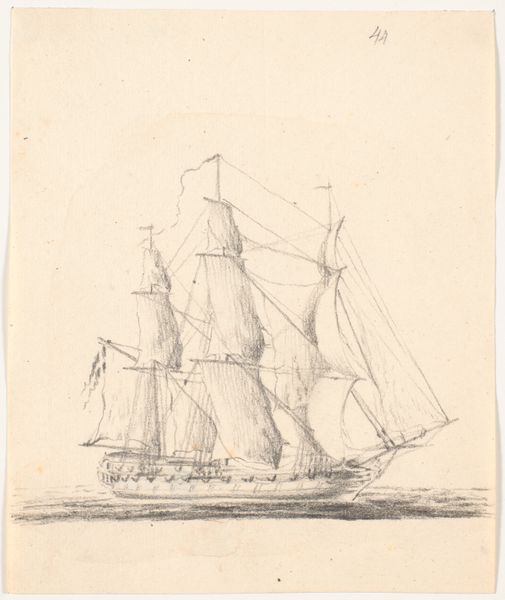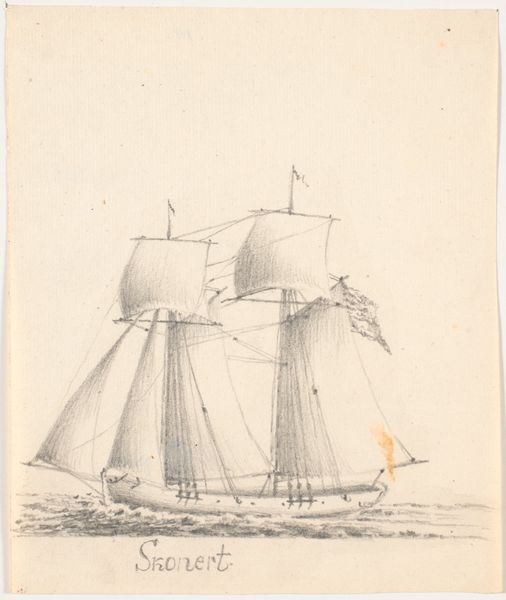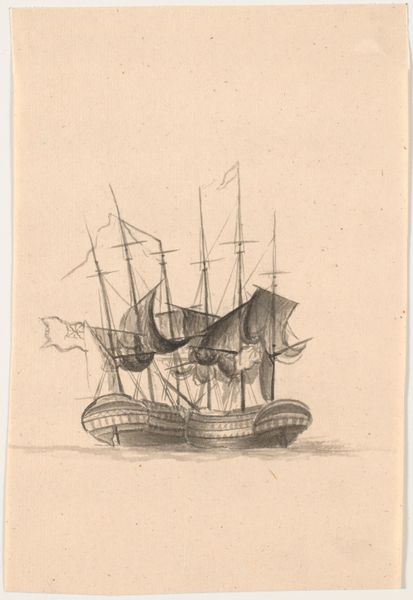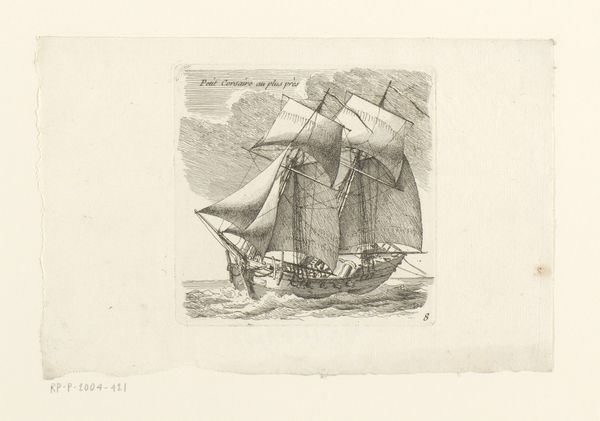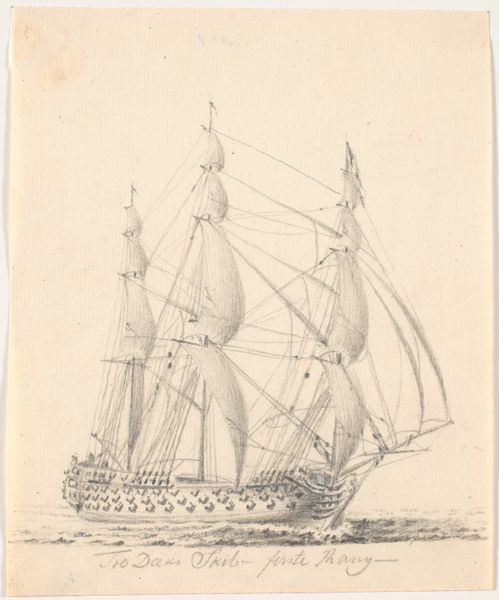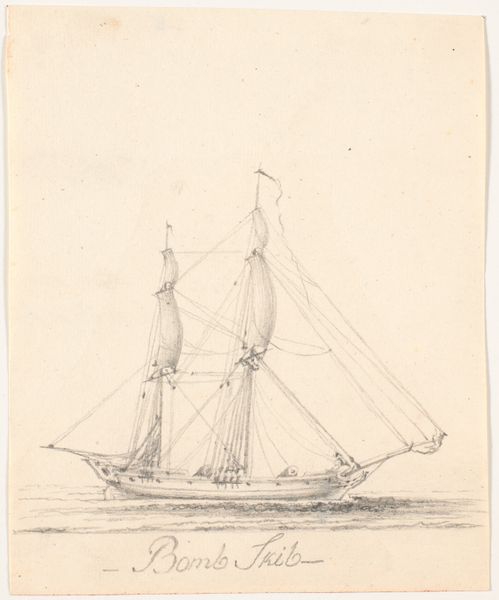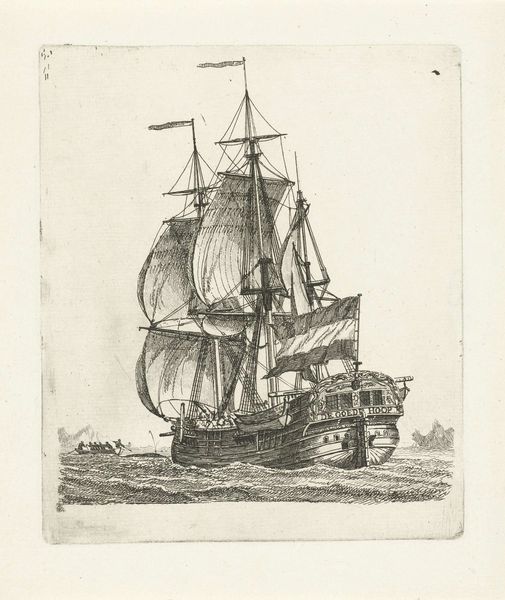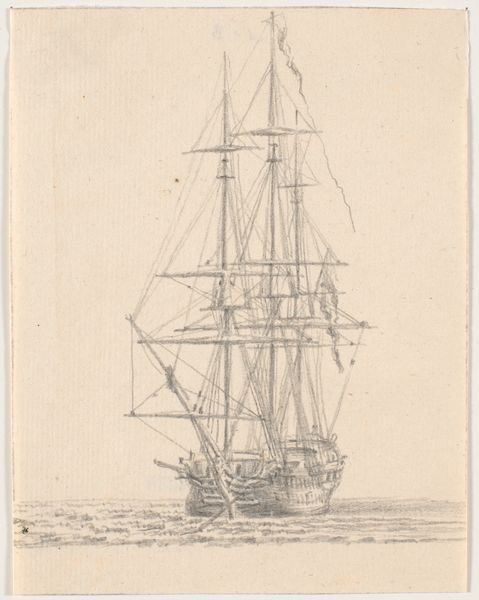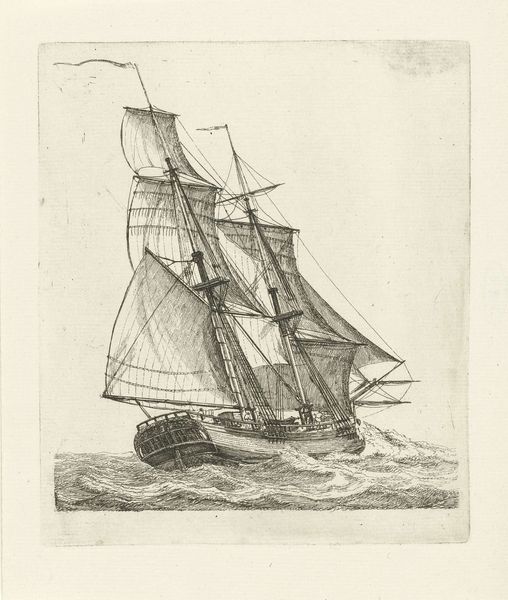
Dimensions: 172 mm (height) x 136 mm (width) (bladmaal)
Curator: Here we have "Marineskib," a pencil drawing, likely created between 1746 and 1828, by C.A. Lorentzen. It's currently housed at the SMK, the Statens Museum for Kunst. Editor: Immediately, it evokes a feeling of vulnerability. A lone ship, quite small in scale, battling visibly rough seas. It's almost monochromatic, which enhances that stark feeling. Curator: Yes, that lack of color certainly focuses our attention. The image of the ship evokes Romantic notions of man against nature, of facing forces beyond one's control, very potent symbols of that period. But think of what a ship, specifically, might have symbolized then: exploration, trade, connection…and also, colonization and conflict. Editor: And all that from a humble pencil! I’m interested in that medium choice. It implies a certain immediacy, a sketch rather than a grand, labored oil painting. Was this a preparatory drawing, or a finished piece in its own right? The roughness around the waves gives a tangible texture, though the mark-making, it hints at a churning process and movement of its making that adds another layer of emotion to it. Curator: That's a keen observation about the medium. Pencil allowed for a freedom and a potential for reproduction that paintings didn't always offer at that time. Also the lack of other shading elements leaves one feeling suspended, not quite a storm and not quite calm, almost as if there is an anticipation of something else occurring outside our field of vision, a sort of impending element is prevalent. What does that tell you, perhaps that's reflective of the larger historical perspective? Editor: The pencil marks convey the tension. Maybe a bit about that tension, like those used in shipbuilding. They relied heavily on understanding wood’s properties to achieve balance and structure, quite in contrast to the emotional turbulence the ship seems to be riding on. To your point about the symbolic anticipation, I’m inclined to consider the practical concerns interwoven with any romantic interpretations. What materials were available, what techniques were accessible—the artist wasn't working in a vacuum, were they. Curator: Precisely, but the skill in conveying an emotionally impactful moment via material restrictions speaks to Lorentzen's vision, too. I am taken by the ways in which he has the light reflected, like little dashes, as well as the waves which evoke chaos around the seemingly simple lines used to display it. Editor: It makes one wonder how often these seemingly smaller artworks serve as key points to larger movements. Thinking of Lorentzen, he took an efficient, practical medium, pencil, and built from that—layered strokes to construct texture and form. I agree, there is significant evocative power contained in this piece, even for a smaller rendering.
Comments
No comments
Be the first to comment and join the conversation on the ultimate creative platform.
